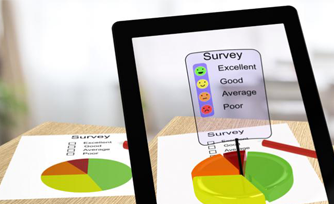
Augmented Learning, What You Need to Know
Are you seeing buzzwords in the learning industry like Augmented Learning? Do you want to implement an Augmented Learning program at your organization but you don’t know where to start?
What is Augmented Learning?
Augmented Learning is the next step in the evolution of eLearning to enhance the learner’s experience and demystify real world objects and their environment. It is closely associated with Augmented Intelligence and Augmented Reality. As Augmented Intelligence applies information processing capabilities to extend the processing capabilities of the human mind, Augmented Reality superimposes information based on the learner’s sensory inputs.
The use of Augmented Learning can enrich the learner’s experience to help him gain a better understanding of information, which results in higher retention and better engagement with the learning audience. Augmented Learning has enabled the combination of content (in the form of text, images, video and/or audio) and interactivity with the learner’s inputs (voice, image, locality, and/or gestures).
In Augmented Learning, the location, context and learner’s input are taken into account by the eLearning applications which display the relevant information in the form of text, video, or audio or navigate to a webpage. The learning environment is not limited to a physical space such as a classroom and can be accessed by the learner on the go using smartphones and tablets. Applications use various inputs like voice recognition, touch recognition, Optical Character Recognition (OCR) and interactions as triggers, then the learning content is delivered to the user on-demand. For example, the user can navigate in a virtual tour application by using voice commands and can access different information by interacting with different elements in the digital environment.
One of the main features of Augmented Learning is to overlay the learning content or required information in the form of audio, video, 3D animations or text on the basis of input provided by the learner, including the current location of the learner, current visual image or voice commands. The learning content can be displayed as simple text or a 3D virtual world with complex interactions to enhance the learning experience, and inspire the learner to discover more details on the topic and target her learning.

The emergence of powerful mobile devices such as Smartphones, Tablets, Virtual Reality headsets and Oculus Rift has made Augmented Learning possible and engaging. Augmented Reality based eLearning applications can be installed on these devices and used to explore and learn. Continuous internet access, improved hardware, audio and video recording capability, and access to the GPS location of the learner have made it easier to provide accurate input to the application and access to the desired information.
By using Augmented Learning applications the learner can work with different learning objects in the virtual world to explore and acquire learning. The advantage of using Augmented Reality is that there are no consequences to user interactions in the virtual world as compared to interactions with objects in the real world. Augmented Reality bridges the gap between theoretical learning and practical learning by combining inputs from the real world and presenting real life objects virtually to the learner to manipulate and explore relevant information.
Augmented Learning Benefits
- Inspire learners to explore and discover more learning content/information
- Make learning interactive and engaging by augmenting real life objects and scenarios
- Instill the practice of on-demand learning
- Objects and information in the real world become interactive in a virtual world
- Applicable to many domains like industries, commercial use, classroom learning, simulation of high cost training, etc.
- No associated costs for making errors as the whole environment and objects are virtual
- Learning can be directed towards gathering facts, and applying learning in real time rather than reading and memorizing content
- Based on objective learning and sensitive to the content
Concerns
- Available only to Smartphone or tablet users
- Learning experience depends on the performance of the devices available
- Need to establish standards for developing Augmented Learning applications
Conclusion
Augmented Learning has evolved in recent years and with the introduction of more powerful devices, learners’ engagement and learning experience has improved significantly. With time and the evolution of technologies and devices in the coming years Augmented Learning will grow and foster learning innovation. Increase in the usage of mobile devices for learning will play a major role in defining the growth path for Augmented Learning.
-Harsh Chhabra, Programming Design Manager, Design Solutions
Read More:
Metaverse: Virtual Reality is the Future of Corporate Training






No Comments